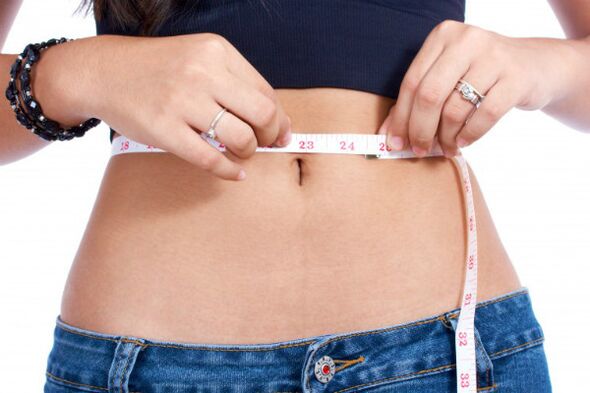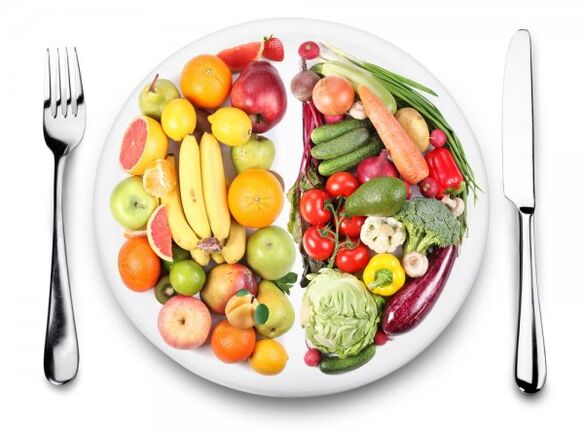The rapid popularity of the 7-day salt-free diet in Japan is attracting more and more modern women's attention. The proposed article on similar nutritional principles will help develop menus and see amazing results. In the land of the rising sun, it is rare to see women with curvy figures. What is the secret of Japanese women? Climate conditions, genetic factors, or secrets hidden in the characteristics of Japanese cuisine? And, most importantly, can European women achieve such results? why not. You only need to use the developed Japanese diet for 7 days. However, before entering "Eastern Weight Loss", you need to understand him deeply, understand the principles of this kind of nutrition, how do they apply to our country, what are the advantages, disadvantages and contraindications of this kind of nutrition? lose weight.

The basic principles of "Japanese-style weight loss"
The reason why the Japanese diet is popular is that the Japanese are considered to be the healthiest country on earth. Facts stubbornly prove this: In this country, the largest proportion of centenarians, overweight and obesity have nothing to do with the population. In addition, according to statistics, the Japanese rarely suffer from cardiovascular diseases, and their intellectual potential has long been the envy of the world. In addition, the Japanese live an active lifestyle, walking and cycling. Let us consider the basic principles of "Japanese weight loss" and understand its mechanism of action.
All these data have aroused the interest of doctors and nutritionists and encouraged them to study the Japanese nutritional system. Using this method to analyze the diet, nutritionists agree that the duration of the Japanese diet should be 14 days to obtain results. At the same time, the menu is calculated for a week, provided that the diet can be restarted from the eighth day. Therefore, the basic principle of the Japanese diet for 7 days to lose weight was derived.

- In order to lose weight effectively, please eat in small portions. The Japanese diet focuses on results and therefore opposes overeating. This is why Japan is used to eating with special chopsticks, which allow you to absorb food slowly without rushing. And, as you know, the slower a person eats, the faster the hunger will disappear.
- During the salt-free diet in Japan, the use of sugar, salt, and spices of any kind is prohibited.
- Sweets and baked goods should be excluded from the diet. You must eat rice instead of bread. It is a staple food of the Japanese and is much healthier than bread products, which contain a lot of sugar and starch.
- When cooking, you must pay attention to the quality of the food and maintain the beneficial properties of the product. In Japan, food that is "overcooked" is not eaten, and all foods are gently cooked. You also need to give up greasy "heavy" sauces and replace them with broth.
- In terms of beverages, green tea and water should be the main ones, and drink at least one and a half liters a day.

How does the Japanese diet work?
Although the Japanese 7-day diet is considered by many to be unsafe, rigid and ineffective, its popularity is still growing. This is because more and more people want to lose excess weight quickly in a short period of time. Let's take a look at how the Japanese diet works and what safety principles should be followed. The secret behind the amazing effects of the Japanese diet is that people eat high-protein and carbohydrate foods for seven or fourteen consecutive days, instead of all high-fat foods. Therefore, the daily calorie intake required for a normal life is reduced.
The fact is that in the context of dieting, a person tries to significantly reduce food intake. However, the habit of eating and drinking can have a negative impact on drastic changes in diet, and the body will be under stress, which cannot protect the body from constant hunger. The 7-day Japanese diet guarantees long-lasting results because the dishes included in the permitted list are very satisfying because they are rich in protein and protein. A small portion is enough to satisfy hunger and replenish physical strength, but at the same time weight loss will not consume extra calories.
The 7-day Japanese diet menu: what can you eat and how can you eat it?
In order for the Japanese diet to be balanced, it is important to include the right foods in your diet. Important components of the Japanese diet are seafood, rice, vegetables and fruits (except bananas and grapes), boiled meat, eggs, olive oil, fermented milk and soy products. This page further introduces a rough version of the menu for the 7-day Japanese diet. It talks about foods and foods that can be eaten in principle, and foods that should be discarded.
In order to keep the effect of dieting not long, you need to eat small and frequent meals and drink enough water to flush out the toxins in the body.
For convenience, it is recommended to formulate a Japanese diet menu every week and strictly abide by this nutritional system. Experienced weight loss people recommend that before starting to lose weight, buy all the things you need to prepare meals, so that you don’t have to go to the store and be tempted by contraband in the future. An example menu of Japanese food for 7 days is shown below.
The salt-free diet in Japan is very strict and complicated. In order to be more tolerable, one must move fairly toward the established goal. Every morning on an empty stomach, you should drink a glass of water with a little lemon juice (about one tablespoon per glass). This promotes the elimination of toxins and toxins in the body and improves the metabolic process.

first day
- Breakfast: green tea or coffee, beverages should be consumed without sugar and/or milk;
- Lunch: 2 poached eggs, cabbage salad or meatless stewed cabbage, a tomato, a glass of tomato juice without salt;
- Dinner: 200 grams of boiled or stewed fish.
the next day
- Breakfast: a small piece of black or rye bread, with bran bread, coffee without sugar and milk;
- Lunch: 200 grams of boiled fish, olive oil cabbage salad, a glass of unsalted tomato juice;
- Dinner: 100 grams of boiled meat and a glass of kefir.
The third day
- Breakfast: sugar-free milk coffee, biscuits (2-3 pieces);
- Lunch: Stir-fried vegetables in vegetable oil (except potatoes);
- Dinner: 200 grams of boiled meat, cabbage salad, 2 boiled eggs.
The fourth day
- Breakfast: 100 grams of stewed vegetables, sugar-free coffee and milk;
- Lunch: 200 grams of boiled fish, a glass of unsalted tomato juice;
- Dinner: 200 grams of any fruit except bananas and grapes.
Day 5
- Breakfast: 100 grams of stewed vegetables, sugar-free coffee and milk;
- Lunch: 200 grams of boiled lean meat, a glass of tomato juice without salt;
- Dinner: 200 grams of any fruit except bananas and grapes.
Sixth day
- Breakfast: sugar-free and non-dairy coffee;
- Lunch: Unsalted chicken (300g), vegetable oil cabbage salad, a cup of kefir;
- Dinner: 2 boiled eggs, 200 grams of stewed vegetables (except potatoes).
Seventh day
- Breakfast: green tea;
- Lunch: 200 grams of boiled lean meat;
- Dinner: 200 grams of cooked unsalted lean meat, vegetable oil cabbage salad, a cup of kefir.
At the end of the week, the scale will display an answer of 5-7 kg. If you need to lose more, then you need to go to the second round of Japanese weight loss. After that, you should definitely take a break and start using this method of dealing with excess weight no earlier than six months later.

Results, advantages and disadvantages of the Japanese diet
Any advantages and disadvantages should be viewed through the prism of achieving the established goals. The results of the 7-day Japanese diet to lose weight are impressive. By removing excess fluid from the body, the speed of getting slim is impressive. Usually, you lose 5 to 7 kilograms per week. The advantages of the Japanese diet include rapid weight loss, elimination of toxins and toxins from the body, and improved metabolism in the body. Due to weight loss, the joints work normally, and the body feels light. In addition, in terms of financial costs, Japanese food is cheaper than other methods.
The disadvantage of the Japanese diet is its harsh and unstable result. The lack of fat and salt in the weekly diet promotes the excretion of excess fluid from the body, so weight will be lost quickly. Once these foods are back in the diet, the weight will start to rise again. In order to slow down this process, if there is no way to give up completely, you need to properly exit the diet and gradually add prohibited foods to the menu.
Get rid of the Japanese diet
So that at the end of the week of "fasting" and weight loss, the kilograms will not return and you need to get rid of the diet properly. The withdrawal from the Japanese diet should be steady and gradual. The following rules will help consolidate the results obtained from the Japanese diet for 7 days or more.
- It is not recommended to change the diet drastically; forbidden or restricted foods should be added gradually and in small amounts.
- As the body adapts to new nutritional conditions, salt and sugar should be gradually introduced, because these products can retain fluid in the tissues and turn into fat deposits.
- In the first few weeks, dinner should be carried out in the same way as during the diet, which is protein. Eating is forbidden 2 hours before going to bed.
- The shortest adaptation period of the body after Japanese diet is 15 days.
Japanese food taboos
No matter how much everyone wants to lose weight, there are many contraindications. According to these contraindications, the Japanese diet is forbidden because it is full of health deterioration. The risk groups of Japanese dietary taboos include:
- Pregnant and lactating women;
- Children under 18;
- People with diabetes;
- People with chronic and acute diseases.
The process of losing weight in the Japanese diet varies from person to person, because each organism has its own unique characteristics. In order to consolidate the long-term results, after dieting, it is necessary to modify your nutritional principles to exclude fat and simple carbohydrates, and limit salt intake. This not only helps to maintain a good physical condition, but also helps to heal the whole body.
















